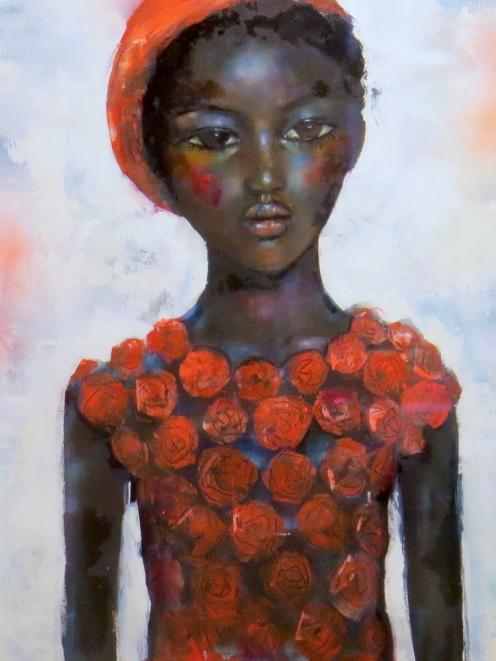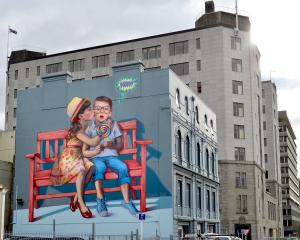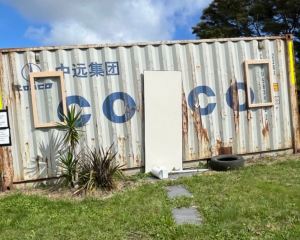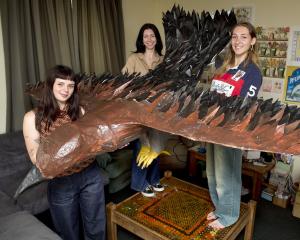
(Milford Galleries Dunedin)
GALLERY owners are slowly peering out from behind their doors and blinking in the light of the post-lockdown world. While not all local galleries are open yet, several have unveiled — or restarted — interrupted exhibitions.
One such exhibition is an impressive series of works by Chris Heaphy at Milford Galleries Dunedin. Heaphy has long worked with the motif of silhouetted Maori heads, a form which directly references New Zealand history while working on several levels within this framework. These are simultaneously the honoured images found in wharenui and the colonial artists’ depictions of the ‘‘noble warrior’’ encountered in the new land. A more sinister undercurrent is the analogy with the tribal heads taken as museum exhibits and only now being returned to their rightful families. Within this multilayered motif, the artist has overlaid a personal symbolism which draws from the history of New Zealand art, notably Gordon Walters, and from New Zealand flora and fauna. Solid central stems grow up, their branches bewitching with their hidden meanings. Heaphy has produced his latest series in the brave but effective palette of black on black, with gloss symbols emerging and glinting from the matt background. With the exception of some blue and traces of ochre yellow, it is the traditional troika of black, white and rust red which dominate.

(RDS Gallery)
A JOINT exhibition by three artists with Dunedin connections is on display at RDS Gallery. The exhibition includes several ceramic pieces by Philip Jarvis, two large canvases by Pete Wheeler and a series of acrylic works by Felix Harris.
British-born Dunedin resident Philip Jarvis’ work is a whimsical confrontation with clay. His pieces, which include worked material and found objects, defy the expectations of form, with word-laden vessels seeming to extrude the unexpected — pin cushions, gravity-defying plates and plastic balls.
Pete Wheeler has an association with Dunedin as a former polytechnic art student, and now divides his time between New Zealand and Berlin. His two large canvases are brightly coloured and somewhat disturbing, whether it be the uncomfortable jolt of Looking for my own name or the more subtle, and more attractive Trojan Horse. Looking for my own name could be an apt comment on Felix Harris. The son of two highly respected local artists, Harris has found his own voice in a series of bold, bright works in which forms are either demarked by thick strokes of paint over heavily worked backdrops or obsessively dotted with hue in a manner reminiscent of traditional Australian Aboriginal art.

(Gallery De Novo)
AN invitation to be guest illustrator at New York Fashion Week has reaped dividends for Dunedin’s Suzy Platt, in terms of inspiration and recognition.
The works — captured long-distance from her Otago studio, featured couture from the New York catwalks — were displayed in the London studio of top fashion photographer Nick Knight. Several of the works were snapped up by top names in the fashion industry, and as a result Platt’s already growing international reputation has expanded further.
The exhibition at De Novo displays many of the images from her New York collection.
Working mainly in gouache and mixed media on paper, the artist has captured the clothing creations and the models in half-length and head-and-shoulder portraits. In doing so, she has subtly revealed the difficulty — almost irony — of trying to capture the images of models. While many of these women are lauded as examples of high beauty, their job is to show off the clothes without undue distraction and, as such, the modelling world has developed a look, a deliberately masked and unemotional expression. Despite this, the artist has managed to capture something of the essence of the personalities behind the masks in these intriguing and impressive works.
- James Dignan












